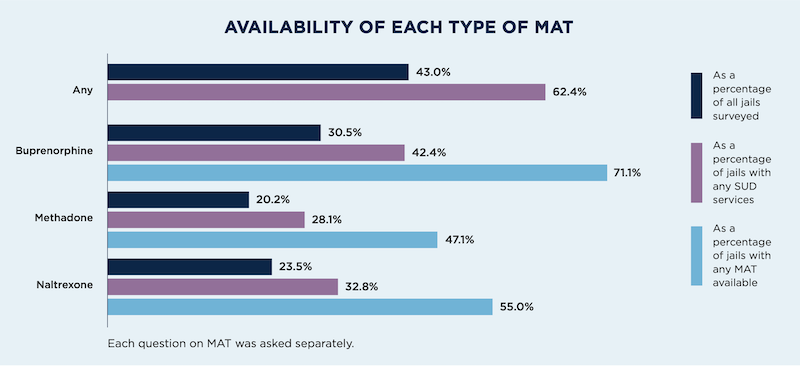A wealth of data on the impact of substance abuse among incarcerated persons and how medications can make a positive impact are summarized in Quick Take, Medications for Opioid Use Disorder in U.S. Jails and Prisons: Status Update (March 2024).
Statistics from federal sources and special studies include, for example:
- Medications for opioid use disorder (MOUD) are far more likely to be available as compared to recent years: "about 30% of jails provide buprenorphine and about 20% of jails provide methadone, two of the three FDA-approved MOUDs."
- "[I]ndividuals leaving incarceration are up to 129 times more likely than the general population to die of an overdose in the weeks following reentry."
- "In the weeks following release from incarceration, people who had received MOUD are 75% less likely to die of an overdose and 85% less likely to die of any cause."
- [A]bout 30% of the nation’s 3,535 jails provide buprenorphine and about 20% provide methadone. The study found that a majority of these jails make methadone and buprenorphine available to individuals already receiving MOUD prior to entry."
Access our resources on Substance Use & Addiction.

JCOIN Survey Results in Quick Take: Medications for Opioid Use Disorder in U.S. Jails and Prisons: Status Update